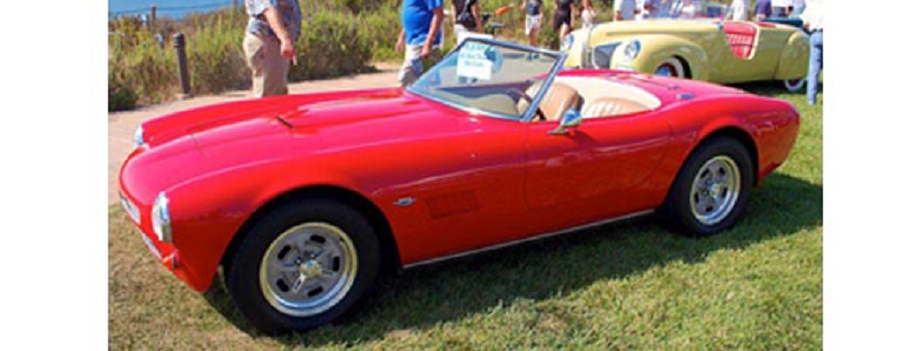
Hi Gang…
Back in 2011, I posted a mystery car that was owned by Tom Pawlak who lives in Southern California. It was called the “Hirsch Sports Car” but that’s all that Tom and I could find out about the car. And like any mystery car out there, the stories abounded on what it was, why it was built, how many were made, etc… All work to determine the history of the car came up with interesting possibilities, but nothing certain about its origins was forthcoming.
So to help, we decided to do what we do best here at Forgotten Fiberglass. We posted pictures and a story of what we knew and what we did not in the hopes of that someone “in the know” would “know” what it was and help. Click here to see the story we wrote about the Hirsch roadster back in May, 2011.
That person showed up about a year ago as was none other than the designer and builder – Jeff Hirsch. I asked Jeff if he would be kind enough to share the story of his car and some photos with our readers too, and today’s story is a result of his efforts.
So….without delay, let’s hear from Jeff.
Take it away Mr. Hirsch 🙂
History of the Hirsch Roadster
By Jeff Hirsch
I was born in Covina Ca in 1958. At the early age of 3, a great deal of my time I was spent either drawing or creating some new contraptions, or taking apart something just to see how it worked. My dad was an accomplished design engineer/inventor and a catamaran builder. Remembering back as a young boy, helping my dad with fiberglass lay-ups and other odd jobs around the boat yard, I was always fascinated by the drafting board my dad used to work out his boat designs. I began using that same drafting table to help straighten out my design ideas.
By the 6th grade I decided to start my drafting/design/art career. First I was designing mini bikes and go carts and then in high school, mono shock bicycles and cars became the main interest. The real struggle was that my ambition to design far outweighed my ability to finance them and see the design through. Many of my designs had remained undone or just forgotten over time. Years went by as a frustrated designer/ technical illustrator. A friend of mine that admired my artwork and passion for car design, decided to finance me to build a fiberglass replica of a 427 Cobra. The project was great and I learned a lot too. However I knew it had to come to an end, because it was an investment after all, so they loaded the cobra onto a car carrier, Ouch.
The 427 Cobra was completed in 1991, soon after that I took on a MGB Ford V6 engine transplant. Then I decided to take what I liked about the design of fine foreign sports cars and came up with my own design. The Cobras short 90″ wheelbase & steering seemed a little unstable at acceleration, so I decided to design a car with longer (96-100″) wheel base and slightly narrower track. Also a motor with some serious torque, a 1970 Ford 460 that was very available in those days, seemed like good choice at the time.
While searching for a motor at the local pick-a-parts I kept coming across Lincoln Continentals. I noticed that the Lincoln’s used 9″ rear ends with disk brakes and a triangulated 4 link suspension set up that I thought would work well for the Hirsch Roadster. The more I discovered about the chassis design, convinced me that I would just use the whole frame and engine. My idea was to shorten the wheel base about 28″, lower engine and move engine mounts back 24″ for a better weight balance and look.
I paid $500.00 dollars for the whole car and spent the day removing corroded bolts that held the body onto the chassis. Then Pick- A-Part brought the giant forklift and removed the body. (See B &W photo of the Lincoln chassis with modifications). Somewhere during the wooden body plug stage I did a complete 360 and decided the car needed to be more nimble. I liked the way my old 1978 MGB handled, so I decided to make my own backbone type steel chassis and utilize lighter suspension choices (280ZX rear and fiero front suspension) along with a DOHC Toyota Supra straight 6 engine and 5 sp trans under the hood.
All said and done the Hirsch Roadster ended up weighing 1900lb instead of 2900lb. I was happy with that decision but still wondered how that Lincoln chassis and 460 motor would have handled and sounded. The finished Hirsch Roadster was later completed with a 289 V8 and 5 speed manual transmission and weighed in at 2100lbs.
The chassis design and suspension choices were the easier part of the proto-type car design. However the one piece fiberglass body with its compound curves in all directions was another story. Standing next to a scale 3D car is a lot different than a sketch that you thought it would look like. I remember twice that during the production of the Hirsch Roadster that I sawed the body plug completely in half, down the middle, to make the roadster narrower and to give the windshield of choice, (1976 Fiat spider) a better fit and feel.
Creating the wooden plug for the body started with 3/4″ plywood panels cut with the just a side profile of the car, one for right and one for the left. Then cross panels were cut to join and correctly space the side profile panels. I then cut the smaller right and left body contour blocks at the same time, assuring an asymmetrical body.
When all the wooden blocking was cut and fastened, I then poured part A & B urethane foam into the cavities. After the foam cured (about 20 min) I would file the foam down to the contours of the wood blocking. The next step was to cover the entire car with light weight drywall mud. So I applied mud and sanded and re-applied until I got the shape he wanted, then applied a couple of layers of fiberglass cloth and resin, for a hard surface and then applied body filler.
Then sand forever, then sands some more. When I was happy with the shape of the body I had a female mold made in which I pulled a one piece male body, which is the only Hirsch Roadster in existence today. Then I made a steel sub frame that was glassed inside the body, mainly to add rigidity and mounting points for the door hinges, hood, trunk lid and body mounts to the chassis. Realistically getting the body to the point of a final paint job took months of sanding and filling, mostly due to my constant changes and tweaking.
No scale models or fabrication drawings were ever used in the creation of the Hirsch Roaster. Only general dimensions like width, length, height and wheelbase. The rest was done by eye all the way through.
My most recent goal, especially after looking over the history of the Hirsch Roadster is to go back to the original Lincoln chassis design and Ford 460 big block and more linear body contours, not to copy, but to compliment the original Hirsch Roadster design. Except this time I would make a scale model first.
Summary:
So ‘glass gang….cars are being designed and built today by talented designers and fabricators – just like back in the 50s. The difference is the scale of the “movement” today. That is, many people were attempting this in the early to mid 1950s, but today, there are just a few craftsman left doing this – designing cars from scratch, building cars of their dreams, and driving and enjoying the fruits of their labor.
We’ll be featuring more of these stories of recent original designs being brought to life and built in the near future, and it’s our hope that while our name may be “Forgotten Fiberglass” that the legacy of these cars is everything but forgotten.
What a great story today and thanks so much to Jeff Hirsch in taking the time to pen the story and share the photos. Great job today Jeff and beautiful effort on your sports car. I look forward to your next design in every way and would be honored to share it here with our readers.
Hope you enjoyed the story, and until next time…
Glass on gang…
Geoff
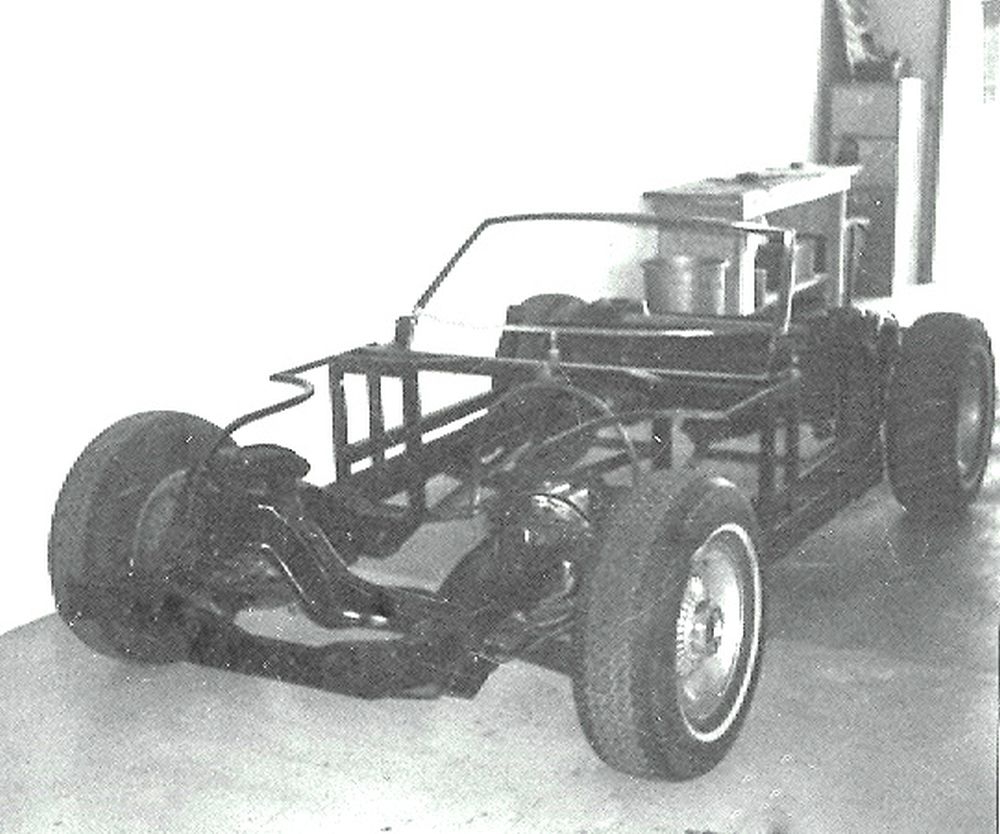
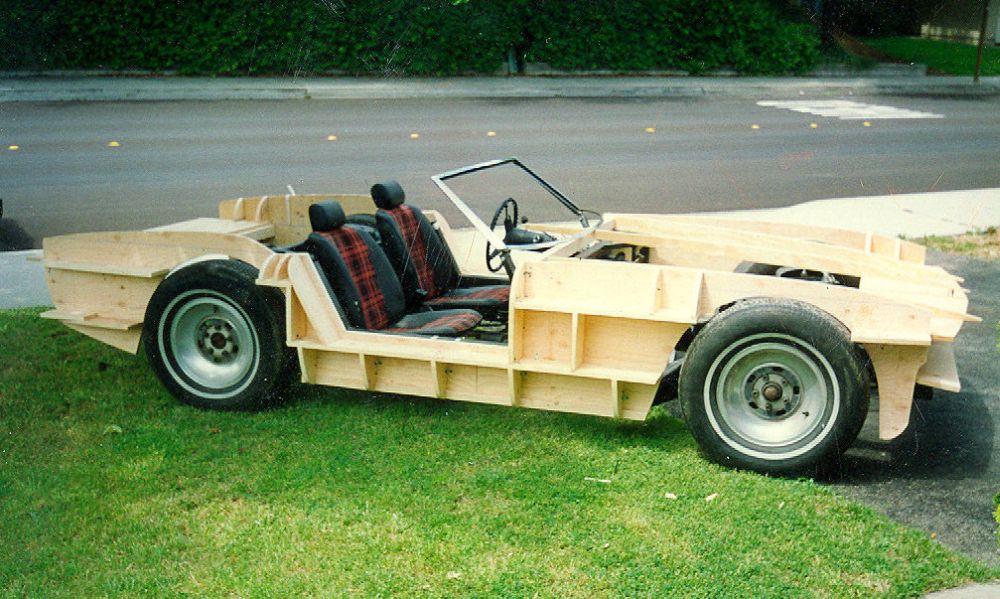
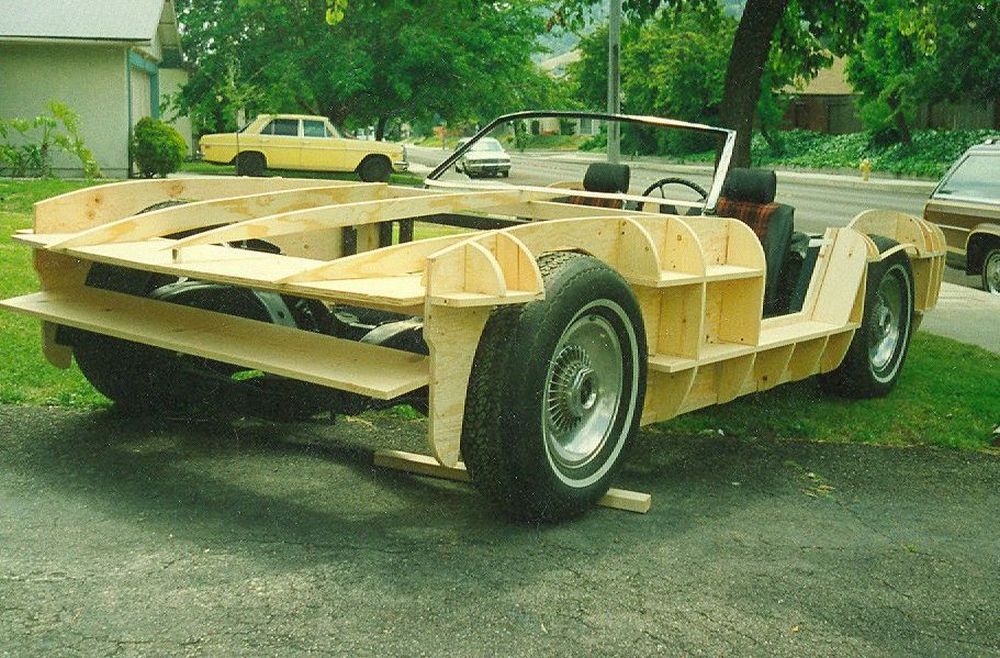
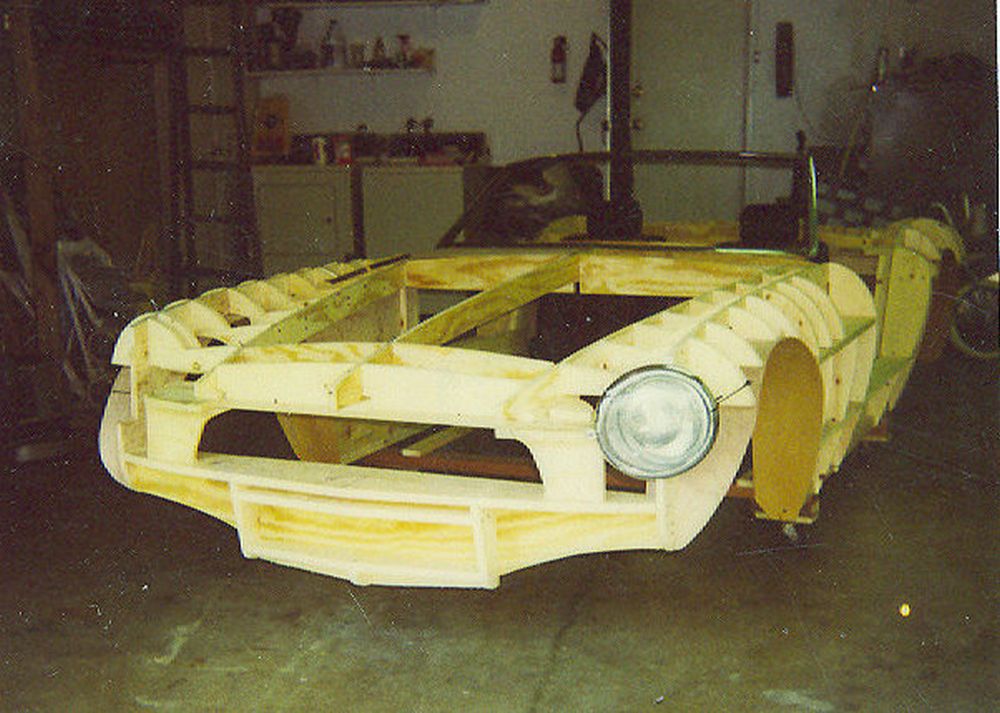
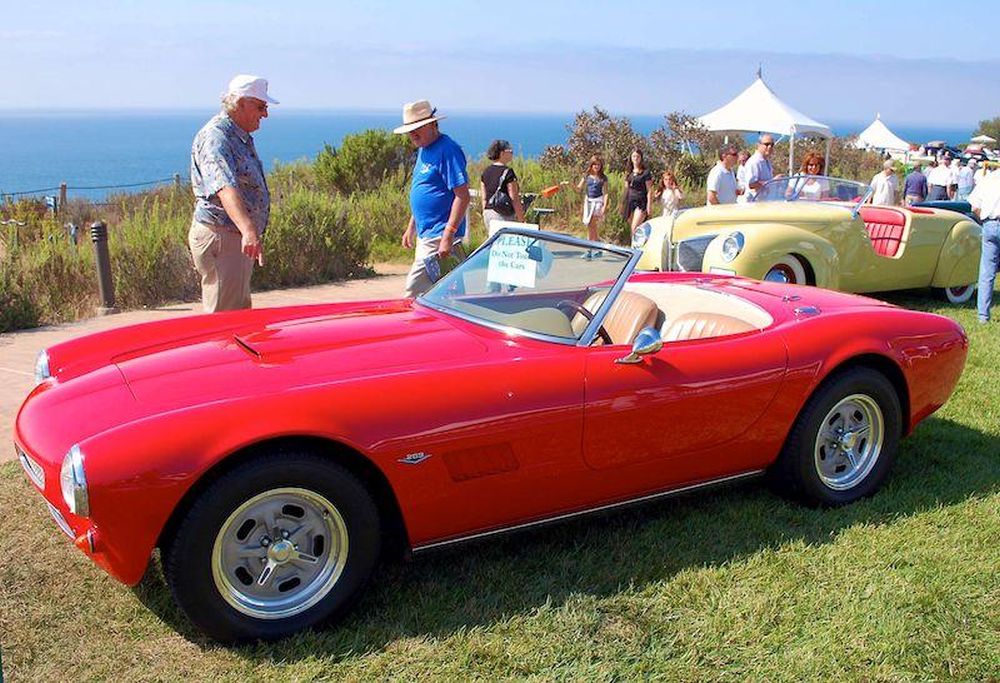
I want to say thanks for all the great comments that I received on the Hirsch Roadster. Very encouraging. If there are others that are interested, I am almost done with the 1/24th scale model.of the next Hirsch roadster and hope to do a story on the build, starting from the model to the completed full scale car. If I have the means that is.
Something I meant to address and sure there are some that ask. Why, would use a 1976 Lincoln Continental chassis in the first place. You know, wouldn’t that thing steer like a tuna boat. Yes, however I adapted a quick ratio camaro steering box and with the short wheel base it actually steers like a sports car. Yes its heavier than than the custom chassis I built for the first car, but with a 460 engine and brakes designed for a 5000lb car thats ok with me. I am not trying to re-invent the wheel here. There are many state of the art cars out there already. This is more a nice look and ride.
Any way thanks again for the encouraging comments.
Jeff Hirsch
I saw you today
…I find the shape to be very pleasing, and the proportions are just right. The car’s attitude is spot-on. The design is great, but what REALLY does it for me is the execution, the fit and finish, and the attention to the details that are often overlooked on
these creations. Mr. Hirsch is a talented designer AND a craftsman!
Wow! What a spectacular design and execution. Would love to see more pictures of the interior which appears to be especially well done. The windshield selection is so important to the finished appearance and how a car presents itself. Examples are the 53-55 Corvette windshield assemblies on some of the Byers cars and the near perfect Miata windshield of the Italia cars from the talented hands of Jim Simpson. The Fiat spider windshield on this car is spot on. Very nice job Jeff.
Great story excellent pictures..One of the best efforts have seen lately.
Mel Keys
Great job Jeff!, now get started on the next one, no one knows better then us car nuts how long these projects can take and how many times we turn around and change something thats all done.I love your plan to use the shortened Lincoln, saves time and money, can’t wait to see the next one!
Wow. That is a REALLY nice looking car!
Hats off to Jeff Hirsch for a job well done and to Geoff Hacker for bringing us this unusual story. That’s a GREAT looking car!
Beautiful job, Jeff. A gorgeous creation. A ton of work but a wonderful, nicely finished car in the end. Very inspiring. Congratulations.